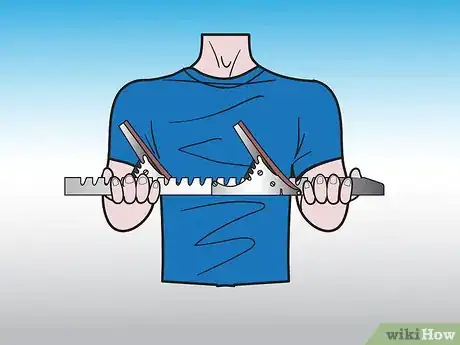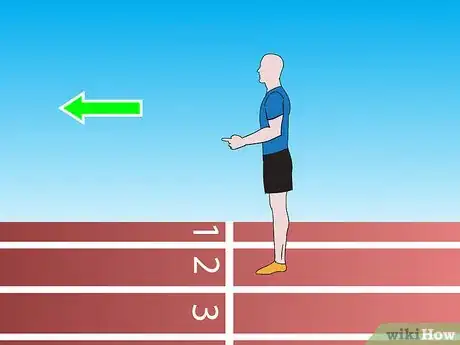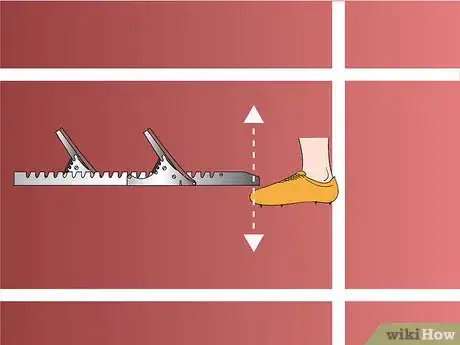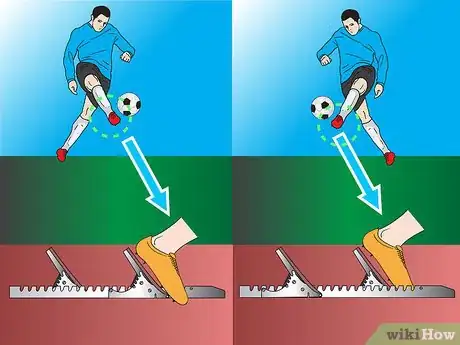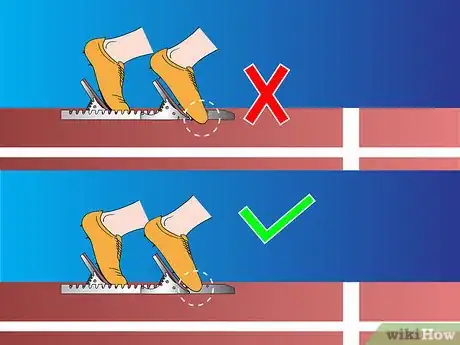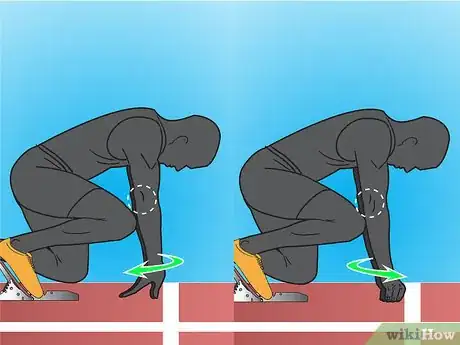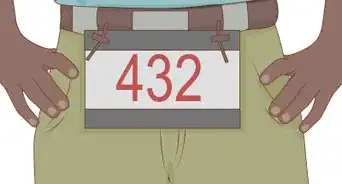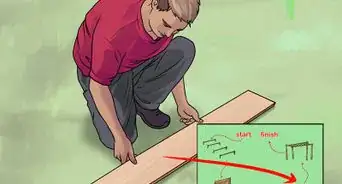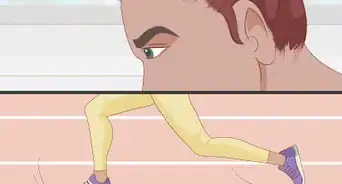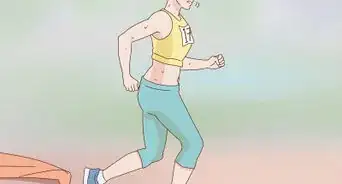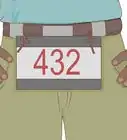wikiHow is a “wiki,” similar to Wikipedia, which means that many of our articles are co-written by multiple authors. To create this article, 19 people, some anonymous, worked to edit and improve it over time.
wikiHow marks an article as reader-approved once it receives enough positive feedback. In this case, 91% of readers who voted found the article helpful, earning it our reader-approved status.
This article has been viewed 260,251 times.
Learn more...
This is the absolute best way to set up and properly use athletics starting blocks.
Steps
Setting Up the Blocks
-
1Hold the unit in your hands.
-
2Face the opposite way that you are going to run.Advertisement
-
3Put your heel on the inner edge of the start line.
-
4Position the blocks firmly onto the track at your toe (the flat piece of metal on the tip of the main body).[1]
-
5Stamp on them to embed them into the track to prevent slipping.
-
6Find your strong foot: it's the foot you kick a ball with. This is the foot that will drive you out of them (the one closest to the line).[2]
-
7Adjust the strong foot block angle using the spring loaded thing on the back so that it is at either it's lowest or second lowest incline (personal preference).
-
8Adjust your weaker rear foot block angle so that it's either up to the highest incline, or second highest. It's personal choice.
Getting Into Position
-
1Begin with the strong foot block: face away from the direction you're going to run. Put your heel on the line. Put your other heel against your toe. You should be two foot lengths out now. Place the block so the part of your spikes that have pins are resting flat on the tartan surface of the block. If you sit into your blocks at this stage, your knee of your front leg should just touch the line.[3]
- Weak foot block: do the same, only instead of two feet out you are going 3 feet (0.9 m) out from the line.
-
2Know how to sit into the blocks properly. Your toes should not touch the ground- they should be well up the blocks. Make contact with the complete block with your foot for maximum power transfer.[4]
- At the "on your marks", you should be in a kneeling position, with your hands shoulder width apart, on the tips of your fingers just behind the line.[5]
-
3Lock your elbows straight until you hear the gun. This will help your arms leave the blocks as fast as possible. Twist your arms outwards so your palms and elbows are facing outwards. Then twist only your hands back so your palm is now facing inwards. Your elbows should still be facing outwards.
-
4Lean forwards and shift most of your weight onto your hands, and be sure not to bend your back too much, as you want a straight line through your body at all times to maximize energy transfer.
Go!
-
1Listen for "Set." When you hear it, raise your backside as far as you comfortably can, while still remaining "coiled", while inhaling sharply. Hold your breath in anticipation, and when you hear the gun, forcibly exhale as you explode off the blocks. You should be aiming for long, powerful strides rather than quick, short ones.
-
2On your first stride, swing your arm straight back, extend your other arm right over your head in an exaggerated fashion, and make sure your lead knee comes right up as far as you can. This will ensure a long, powerful first stride.
Community Q&A
-
QuestionIf I have never used blocks before, how hard is it to get used to them, and is this something I can do on my own, or would I need a trainer?
 Community AnswerIt is not difficult to get used to. Initially, you may find it difficult to take off from the blocks, but regular practice will help. get used to it. It would definitely help for a coach to walk you through the basic techniques.
Community AnswerIt is not difficult to get used to. Initially, you may find it difficult to take off from the blocks, but regular practice will help. get used to it. It would definitely help for a coach to walk you through the basic techniques. -
QuestionHow close is the starting line to the front blocks?
 Community AnswerUsually, you measure with your feet. Put your toes on the starting line, then turn around opposite of the way you should be going. Then take two steps heal-to-toe. Your first starting block should be about that area. Take a third step and that's where your second starting block should be.
Community AnswerUsually, you measure with your feet. Put your toes on the starting line, then turn around opposite of the way you should be going. Then take two steps heal-to-toe. Your first starting block should be about that area. Take a third step and that's where your second starting block should be. -
QuestionDo the feet have to be in contact with the track?
 Community AnswerYes, your toes should be in contact with the track, but not the ball of your feet or your heel.
Community AnswerYes, your toes should be in contact with the track, but not the ball of your feet or your heel.
Warnings
- Make sure you stamp down the blocks. You could hurt yourself if they slip.⧼thumbs_response⧽
References
- ↑ https://coachingyoungathletes.com/2015/09/14/starting-blocks-how-to-set-them-up-in-3-easy-steps/
- ↑ https://www.coacheseducation.com/sprints/george-payan-apr_02.php
- ↑ https://www.coacheseducation.com/sprints/george-payan-apr_02.php
- ↑ https://www.milesplit.com/articles/231838/robert-marchetti-learning-how-to-set-up-in-the-starting-blocks
- ↑ https://www.youtube.com/watch?v=9ZH3OlHhcng
About This Article
Setting up starting blocks is an easy process once you get the hang of it. Start by facing the opposite way that you’re going to run. Put your heel on the inner edge of the starting line and position the blocks firmly on the track at your toe. To prevent slipping, stamp on the blocks to embed them into the track. Adjust the strong foot block angle using the spring so it’s at its lowest or second-lowest incline. Then, adjust your weaker rear foot block angle so it’s at the highest or second-highest incline. To get into position, put your strong foot into the block, making sure the part of your spike that has pins is resting flat on the tartan surface of the block. Position your weak foot in the same way. To learn how to best get out of your blocks at the start of the race, keep reading!
